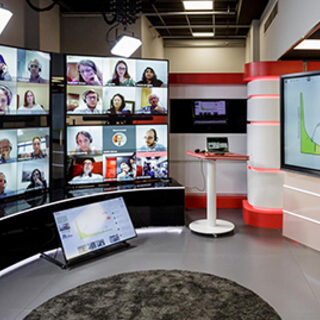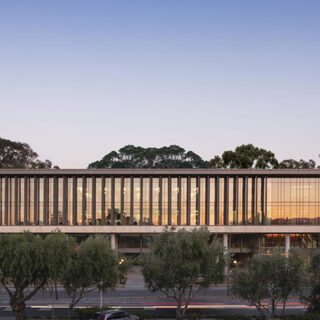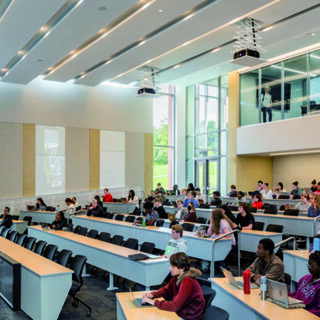Tradeline's industry reports are a must-read resource for those involved in facilities planning and management. Reports include management case studies, current and in-depth project profiles, and editorials on the latest facilities management issues.
Latest Reports
Emphasis Shifts to Hybrid and Blended Learning at Higher Education Institutions Nationwide
Data from recent studies analyzing space utilization at colleges and universities across the country indicates a post-pandemic shift toward supporting hybrid education models that blend remote learning with in-person instruction. The studies were designed to analyze the impact of technology-intensive hybrid and experiential learning modalities on higher education while identifying key considerations, best practices, and metrics that can help space planners create more efficient, flexible environments that meet the needs of today’s students, faculty, and staff. Notably, in addition to an increased acceptance of remote learning, students and faculty also desire a return to in-person learning. This dichotomy is driving institutions to adapt hybrid education models that combine online education with active-learning classrooms that require sophisticated IT infrastructure and casual social environments that facilitate informal learning and collaboration.
A Next-Gen Academic Workplace: Stanford’s Open, Responsive, and Rejuvenating Center for Academic Medicine
Dubbed the "tree house," the Stanford Center for Academic Medicine blends into and incorporates its natural surroundings in a design that leaves the occupants feeling better after a full day of work than they felt when they arrived. Amenity spaces, a concierge desk staffed 24/7, small but private offices, and universal access to sunlight all contribute to the popularity of the Center.
Resolving the Reproducibility Crisis in Animal Research
The use of animals in biomedical research, already a decades-long ethically charged issue, has come under fire in more recent years for both a lack of scientific rigor and its huge financial appetite. Concerns about waste in basic research—in animal lives, scientist time, and research costs—are mounting, particularly when investigators are unable to confirm the data and achieve the same results when replicating original experiments (either theirs or others’). The solution? Track the effects of extrinsic environmental factors that can impact an animal's behavior, health, and reproduction: temperature, humidity, light, noise, and vibration.
Making Every Square Foot Count: When Needs Grow and Budgets Don’t
In the 12 years between the conception and funding of Thurgood Marshall Hall and when an architect was hired to design it, the University of Maryland had added four research centers with 40 faculty and staff, creating a 20% shortfall in space and funding. Then at 60% construction drawings, the School of Public Policy added an undergraduate program. Learn how the university made creative use of every available corner of the new building to provide the program the students and faculty require.
Your Name Here: Engaging Donors Beyond the Nameplate
The University of North Dakota was ready to build a new facility for its business and public administration students. They had a significant donor on board to help, but how to make up the rest of the budget? The answer, it turned out, was to engage donors not just in the funding, but in the design and function of the building, and incorporate their ideas into its fabric.





